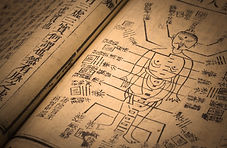A Short History of Acupuncture


Acupuncture has been used in the Far East to restore, promote and maintain good health for over 2,500 years. The first needles were made from stone, and then later from bronze, gold and silver. The first medical account of acupuncture was The Yellow Emperor's Classic of Internal Medicine which dates from about 300 BC.
Acupuncture is rooted in the Daoist philosophy of change, growth, balance and harmony, and The Yellow Emperor's Classic outlines the principles of natural law and the movements of life - yin and yang, the five elements, the organ system and the meridian network along which acupuncture points are located. These records also contain details of pathology and physiology which some 2,000 years later provide the theoretical foundation for acupuncture today.
Acupuncture practice has gradually developed and been refined by masters such as the famous Chinese herbalist Li Shi Zen who, during the Ming Dynasty (1368-1644), published his fifty-volume Compendium of Materia Medica, as well as a study of the Pulse and the Extraordinary Meridians.
Acupuncture experienced a great resurgence of interest in China after the establishment of the People's Republic in 1949. Although it had always remained popular in rural communities, there had been a considerable move towards western ideas and medicine from the eighteenth century onwards.
During the Cultural Revolution (1966-76) the value of traditional Chinese medicine was once again officially recognised and it was given new opportunities to develop. Today acupuncture is used far more extensively in China than in the West in a hospital-based system with facilities for treating acute as well as chronic cases. The national policy is to pursue both systems side by side, with extensive clinical research being undertaken to establish best practice.
Acupuncture was not the subject of serious study in Britain until the late 1950s. Links were made either through Europe, to where many Chinese, Japanese and Vietnamese master practitioners had moved, or through direct contact with teachers and schools in Taiwan, Korea and elsewhere. The early students of acupuncture were often those already practising natural medicines - osteopaths, homeopaths and naturopaths. For many of them traditional Chinese medicine seemed to recognise and formalise many of the concepts they had uncovered through their own experience as practitioners.
There has been a steady increase in the number of professionally trained acupuncturists in the UK, from just a handful of qualified practitioners in the 1970s to over 2,800 registered with the British Acupuncture Council (BAcC) in 2007.
